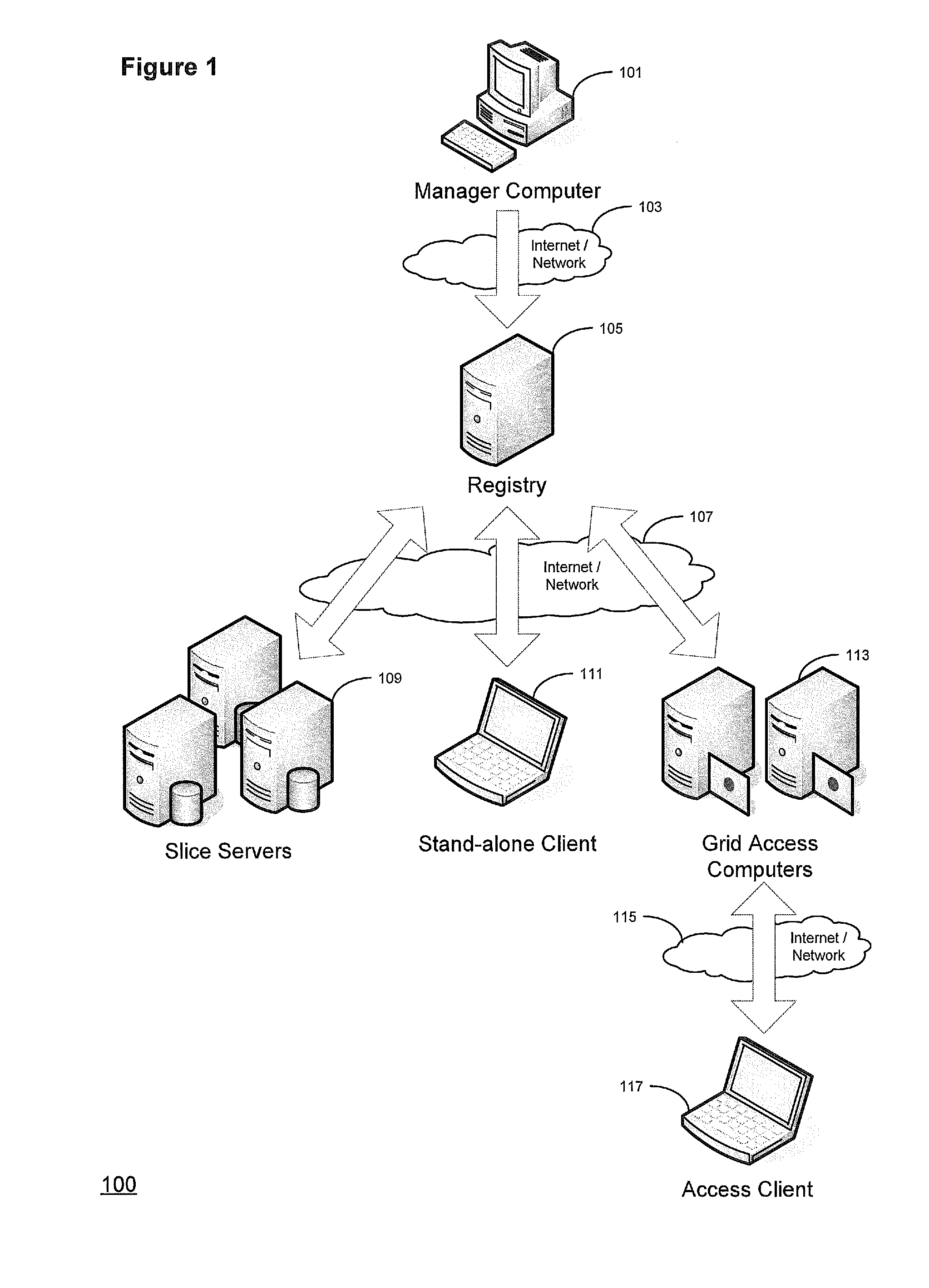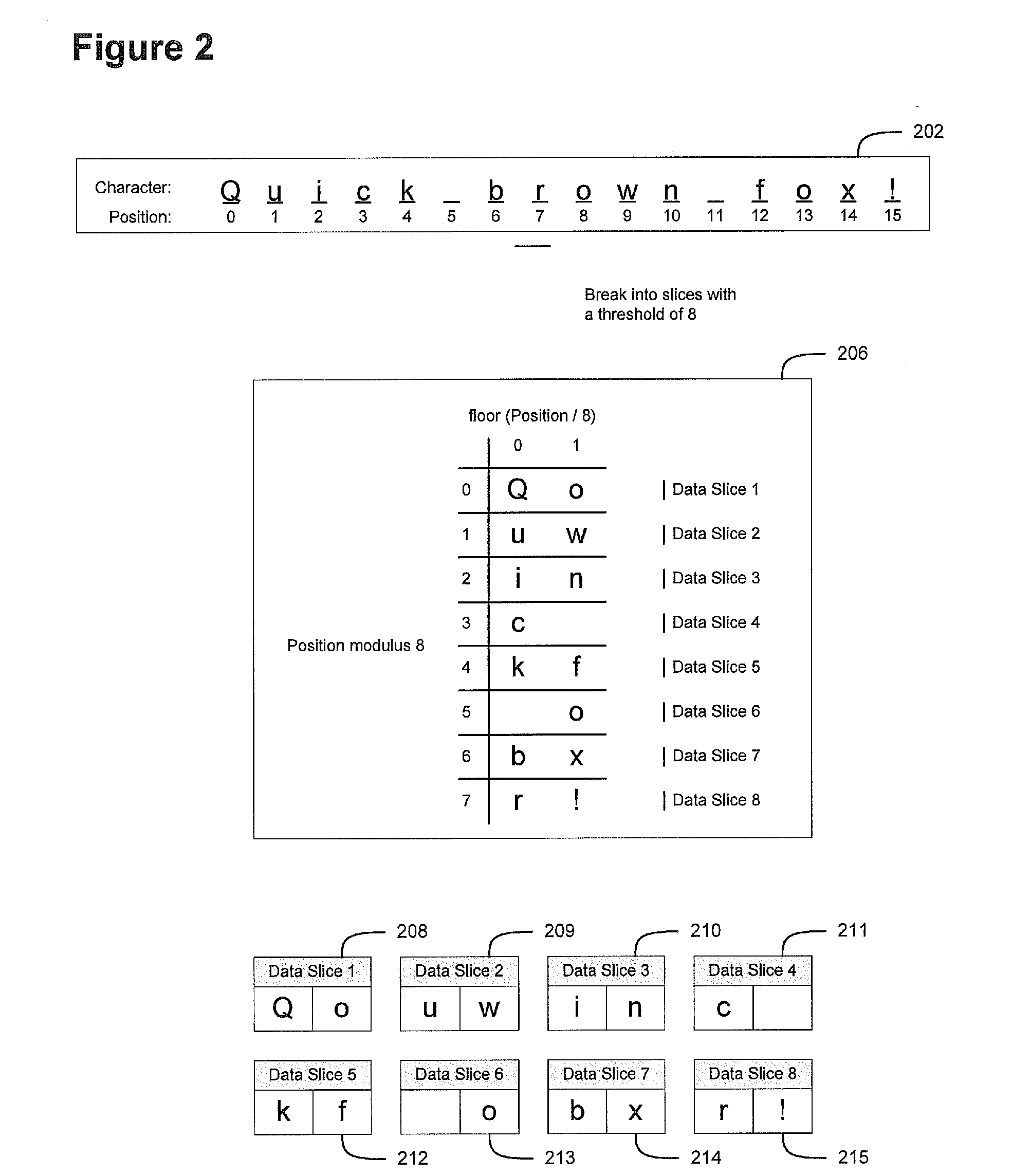Efficient and secure data storage utilizing a dispersed data storage system
a data storage system and data storage technology, applied in the field of secure data storage systems, can solve the problems of inability to store data inability to store an entire usable file in a single location, and inability to operate or destroy devices storing data, etc., and achieve the effect of efficient implementation of a secure dispersed data storage system
- Summary
- Abstract
- Description
- Claims
- Application Information
AI Technical Summary
Benefits of technology
Problems solved by technology
Method used
Image
Examples
first embodiment
[0054]FIG. 5 depicts the steps required to write data from an access computer or an integrated client to a dispersed data storage system in accordance with the disclosed invention. In step 502 a write operation is initiated. The initiation of the write operation involves accepting a data string of arbitrary size, and then, if necessary, padding the string to the dispersed data storage system's data segment size. In step 504 a transposition cipher is applied to the data segment. While the transposition cipher is trivially reversible if a malicious hacker should gain access to a threshold number of slices, the compromise of a single slice will not yield any consecutive information. In step 506 an information dispersal algorithm is applied to the transposed data segment, and the data slices are then written to different storage nodes of the dispersed data storage system in step 508.
[0055]FIG. 6 depicts the steps required to read data from a dispersed data storage system in accordance w...
second embodiment
[0056]FIG. 7 depicts the steps required to write data from an access computer or an integrated client to a dispersed data storage system in accordance with the disclosed invention. In step 702 a write operation is initiated. The initiation of the write operation involves accepting a data string of arbitrary size, and then, if necessary, padding the string to the dispersed data storage system's data segment size. In step 704, data is encrypted using any suitable block cipher, such as those mentioned earlier in this specification. In step 706 a transposition cipher is applied to the encrypted data segment. The use of the transposition cipher will guarantee that no consecutive data will be stored in any slice, and therefore, even if a malicious hacker should compromise the encryption key, she would still have to assemble a number of slices equal to the dispersed data storage system's threshold prior to gaining access to any usable information.
[0057]In step 708 the encrypted and transpo...
third embodiment
[0060]FIG. 9 depicts the steps required to write data to a dispersed data storage system in accordance with the disclosed invention. In step 904, an all-nothing-transformation is applied to a data segment to be stored, thereby producing an all-or-nothing encrypted data segment. The all-or-nothing transformation could be that described earlier in this document, or some other all-or-nothing transformation. In step 906 an information dispersal algorithm is applied to the all-or-nothing encrypted data segment to produce a plurality of data slices, and in step 908, the plurality of data slices is stored to a plurality of storage nodes.
[0061]FIG. 10 depicts the steps required to read data from a dispersed data storage system in accordance with a third embodiment of the disclosed invention. In step 1004, a plurality of data slices corresponding to a stored data segment are retrieved from a plurality of storage nodes, and a reverse information dispersal algorithm is applied in step 1006. In...
PUM
 Login to View More
Login to View More Abstract
Description
Claims
Application Information
 Login to View More
Login to View More - R&D
- Intellectual Property
- Life Sciences
- Materials
- Tech Scout
- Unparalleled Data Quality
- Higher Quality Content
- 60% Fewer Hallucinations
Browse by: Latest US Patents, China's latest patents, Technical Efficacy Thesaurus, Application Domain, Technology Topic, Popular Technical Reports.
© 2025 PatSnap. All rights reserved.Legal|Privacy policy|Modern Slavery Act Transparency Statement|Sitemap|About US| Contact US: help@patsnap.com



